As tens of thousands gather from across the world for COP29 in Baku, Azerbaijan, let's take a closer look at what COP is and why it matters to you.
The Conference of Parties (COP) is an annual gathering of 198 countries that have signed the UN Framework Convention on Climate Change (UNFCCC) to address global warming.
The primary goal is to restrict the rising global temperature to no more than 1.5-2°C compared to pre-industrial levels (1850-1900).
Missing this goal risks irreversible climate shifts, threatening life on Earth as we know it. And, going by the latest data, we are falling short.
Advertisement
Since the first COP summit in 1995, global temperatures and sea levels have steadily increased due to rising emissions. The World Meteorological Organization (WMO) reports that 2023 was the hottest year on record.
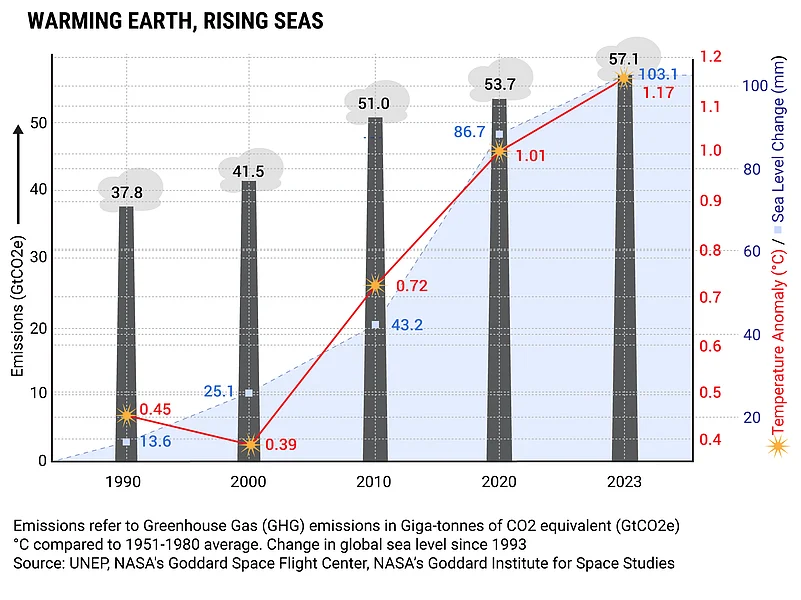
The increase in emissions has been observed across all sectors and sources of greenhouse gases, except land use, land-use change and forestry (LULUCF). The recent United Nations Environment Programme (UNEP) emission report shows the power sector remains the top global emitter.
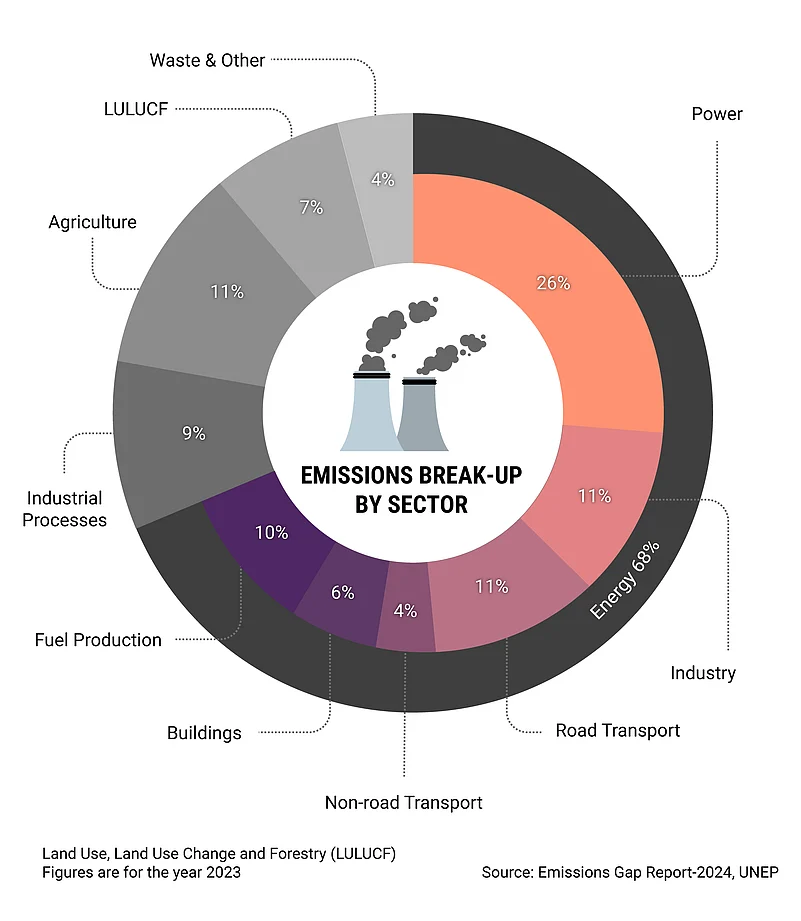
A key driver of rising emissions is inadequate climate finance.
Under the UNFCCC, developed nations, which have historically benefitted from industrialisation, are expected to take the lead in addressing the climate crisis.
Advertisement
In line with this, developed nations have pledged to mobilise $100bn annually until 2025 to assist developing nations in reducing emissions and adapting to climate impacts.
However, they have failed to meet their commitment. It wasn't until 2022 that they finally mobilised $116bn. Worse, 69 per cent of the climate finance came in the form of loans, adding a financial burden to the debt-ridden developing nations.
Worryingly, investments in fossil fuels continued to rise during this period though global commitments were made to reduce their usage.
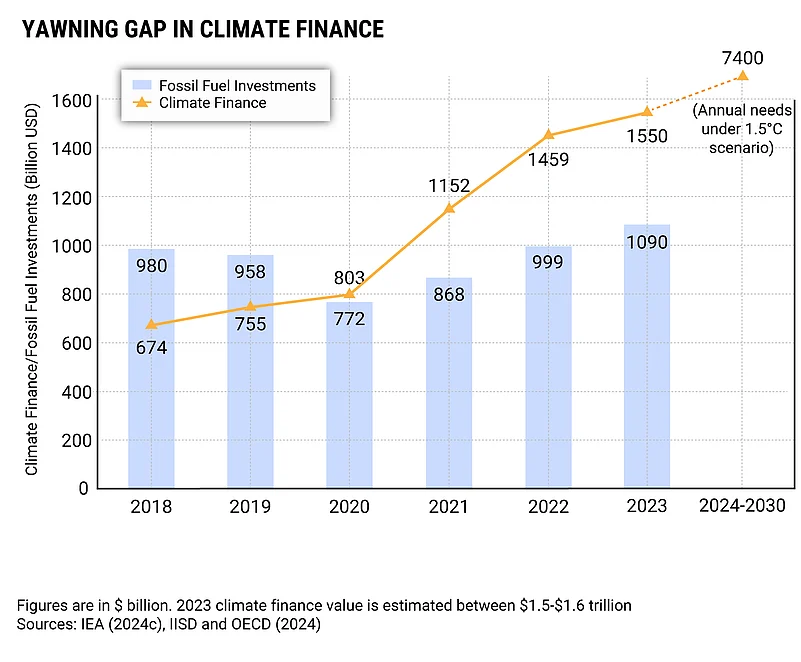
As the $100bn pledge nears its end, COP discussions are now focused on setting a new finance target. Estimates suggest that developing nations would need up to $1.5trn annually to fight climate change, though the true requirement may be much higher.
The UNFCCC Standing Committee on Finance predicts a finance requirement of $6trn each year by 2030. Most parties agree on raising the target to $1trn, but the bone of contention is who should contribute. Developed nations argue that many developing nations have grown economically since the convention was signed and that these nations should also contribute, given the scale of the finance needed.
However, developing nations reject this proposal, emphasising that developed nations, being historically the largest emitters, should bear the responsibility.
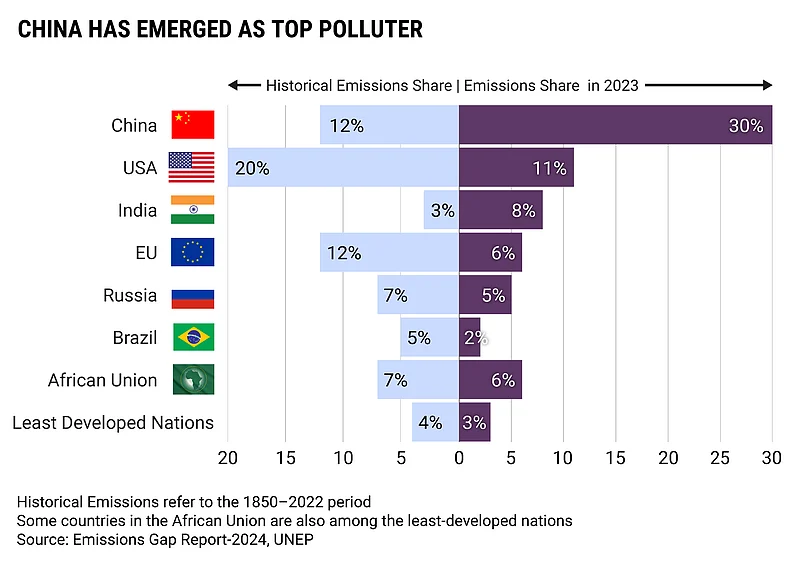
As for India, its emissions have surged with economic progress, yet per capita emissions are only one-third of the global average of 6.6 tCO2.
Advertisement
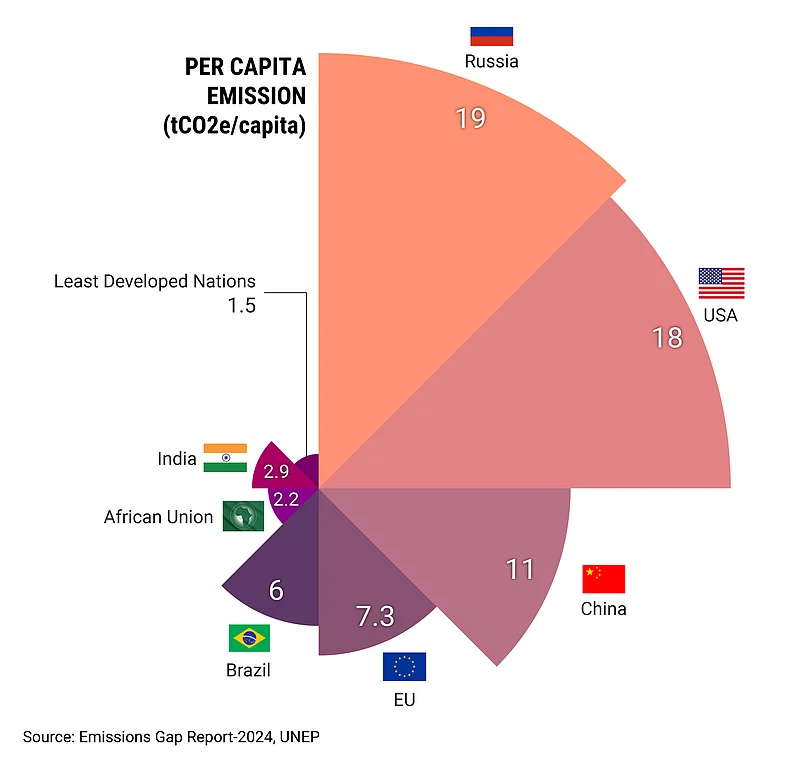
Besides, India has surpassed two of its climate targets early—cutting emission intensity by 35 per cent and achieving over 40 per cent in installed electricity capacity.
According to the UNEP, India is among the few major economies likely to meet its climate targets ahead of schedule. However, significant challenges remain as climate change knows no borders.
Wildfires in California, heatwaves in India, and floods in South China are just some of the extreme weather events witnessed in 2024 alone. While COP parties remain divided over climate finance terms, the mounting global crisis waits for no consensus.















 Just one email a week
Just one email a week